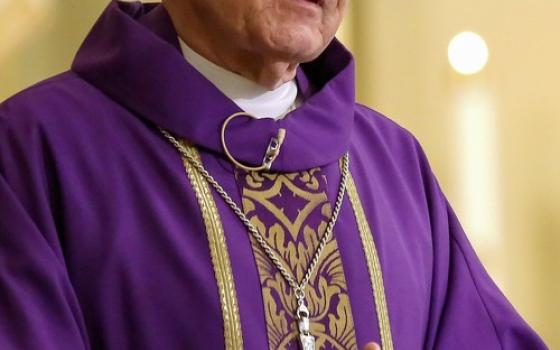
Mission Management
The number of U.S. parishes is declining at a steady rate. According to the Center for Applied Research in the Apostolate (CARA) at Georgetown University, the total number of U.S. parishes is 17,958 in 2010, down from their peak of 19,331 in 1995. Closures and mergers seem to be the norm in most dioceses.
A mere 22 percent of all Catholics attend Mass on a weekly basis. A recent Pew Forum on Religion & Public Life study points out that Catholicism has experienced the greatest net losses as a result of affiliation changes.
It is a bleak picture. Yet despite the overwhelming evidence of decline and disenfranchisement, some parishes are vibrant and compelling.
In Hoboken, N.J., Sts. Peter and Paul Parish has been implementing multiple strategies for the past year that are beginning to show dividends.
Hoboken, a city of 41,000 residents, has a median age of 30 years old with an estimated 2009 median household income $112,174, not atypical for a commuter town close to Manhattan. Young and affluent generally means not interested in parish life.
 Change at Sts. Peter and Paul started with the appointment of a seasoned priest, but first-time pastor. When Msgr. Robert Meyer arrived last summer he immediately took an inventory of the parish’s strengths, assets and areas of opportunity.
Change at Sts. Peter and Paul started with the appointment of a seasoned priest, but first-time pastor. When Msgr. Robert Meyer arrived last summer he immediately took an inventory of the parish’s strengths, assets and areas of opportunity.
The parish, with 1,000 registered families, sits on the Hudson River across from New York City and serves a sometimes transient community. It has a school building that is rented to the Hoboken Catholic Academy, an elementary school for 325 children pre-K through eighth grade that is cosponsored by the five local parishes. The parish also has an old convent.
Meyer had a good staff, but saw real opportunity in this diverse community. Instead of sitting back for the first year and pursuing slow, incremental change, a traditional approach for new pastors, Meyer set out to immediately engage his parish community and to set new expectations for the parish.
Though a rookie pastor, Meyer brought tremendous experience and contacts to the parish.
After graduating from Seton Hall University in South Orange, N.J., Meyer studied at Pontifical Gregorian University in Rome where he received a bachelor’s in sacred theology. He received a graduate degree in moral theology from Rome’s Lateran University, a canon law degree from The Catholic University of America in Washington and a civil law degree Seton Hall Law School.
Prior to coming to Hoboken, Meyer served as a tribunal judge in the Newark archdiocese, was the chief of staff at St. Vincent Catholic Medical Center in New York City, which recently closed. He is an adjunct professor at Seton Hall Law School, the Stillman School of Business, the College of Education and Human Services, and the College of Arts and Sciences. He has been the associate vice president for student affairs and enrollment services for Seton Hall. He has also acted as a legal advisor to the nuncio for the Holy See’s Permanent Observer Mission to the United Nations, where this writer first met him. (Full disclosure: I serve as a volunteer on the Holy See Mission’s Path to Peace Foundation fundraising committee.)
As a city parish, Meyer has the doors to the church open from 6 a.m. to 7 p.m. “We are celebrating our Catholic faith in Jesus Christ with welcoming everyone at every time,” Meyer said.
While the opened doors are welcoming, Meyer strongly encourages new parishioners to engage in parish life and not just periodically visit for the sacraments.
Meyer encouraged Louis Scarpa, director of music ministry, to get more voices and more instruments involved in order to expose parishioners to the best of the church’s music tradition, as well as to include some contemporary pieces at all Masses.
“We have included a combination of professionals and volunteers, increased the number of cantors and secured more faces and more voices,” Scarpa said.
One of the first initiatives Meyer implemented was the creation of a St. Vincent de Paul House, an international community for four parish interns, recent college graduates, to be housed in the convent. Each member of the team had a unique project for the January to June 2011 term, including the development of a Hispanic outreach and evangelization program; the development and execution of a Catholic social justice program; enhancing the parish sacramental celebrations; and the development and execution of a youth ministry program.
Recent college graduates Stacy Nolan and Bailey Walter joined the parish and the St. Vincent de Paul House.
The parish also serves as the Newman Center for the nearby Stevens Institute of Technology. Meyer refurbished the parish gathering space for these college students.
A longtime supporter of the nearby College of Assumption for Sisters in Mendham, N.J., Meyer invited the college to send two sisters to serve at the parish. So Sr. Martha-Anne Mabuntana, a Daughter of St. Francis of Assisi, and Bene Maria Sr. Aurelia Kahere, from South Africa and Tanzania respectively, arrived. They assisted at Mass, provided office support, visited the sick and homebound and spent time with young adults and teens. In August, the parish will welcome two Vietnamese sisters.
Meyer established a public relations/marketing committee and secured credentialed volunteers to staff it. The education committee includes a college president and a professor, a high school president and a grammar school principal.
Nolan, a parish intern, leads youth ministry and is also pursuing a master’s degree at Seton Hall University. “I’m meeting families and focused on high school students,” Nolan said. She is using social networking media outlets like Facebook and Twitter and e-mails to connect with youth.
Walter, another parish intern, hosts a prayer group every Wednesday for young adults on a pier on the Hudson River.
“We are empowered to move forward, even to make mistakes,” said Peter Denio, the director of the RCIA program and religious education. Meyer knew Denio as a student at Seton Hall University. It helps that Denio spends part of his time working for the National Leadership Roundtable on Church Management. “We know that Msgr. Meyer does not himself need to be at the center of everything and that’s empowering,” Denio said.
Meyer also wanted to create a substantive outreach to the Hispanic community so he asked the parish secretary, Lourdes Pitre, if she would lead that effort. Pitre, working closely with parochial vicar, Fr. Benny Prado, created a multiyear pastoral plan to connect and deepen relationships with the Hispanic community, which represents 20 to 25 percent of the parishioners. “Initially, we are visiting the sick and training staff for home visits,” Pitre said.
The parish set as a goal to allocate 50 percent of its $850,000 annual budget on social justice programs, Meyer said.
Meyer is having an impact on Prado too. “For me, my priesthood is moving into a different dimension,” Prado said. “It’s exciting, challenging and blossoming.”
“I am now learning leadership and pastoral administration and am no longer in the shadows,” he said.
All these initiatives are paying off. More than 230 new families have registered and become active members of the parish. The parish exceeded its 2011 Archbishop’s Annual Appeal goal by raising $80,000, or 171 percent of its goal, and doubled the number of donors. The content-rich parish Web site has had a whopping 357,305 visitors this past year.
[Tom Gallagher writes NCR’s Mission Management column. Contact him at tom@tomgallagheronline.com.]




